Kawishiwi Triangle
by Ho Ho
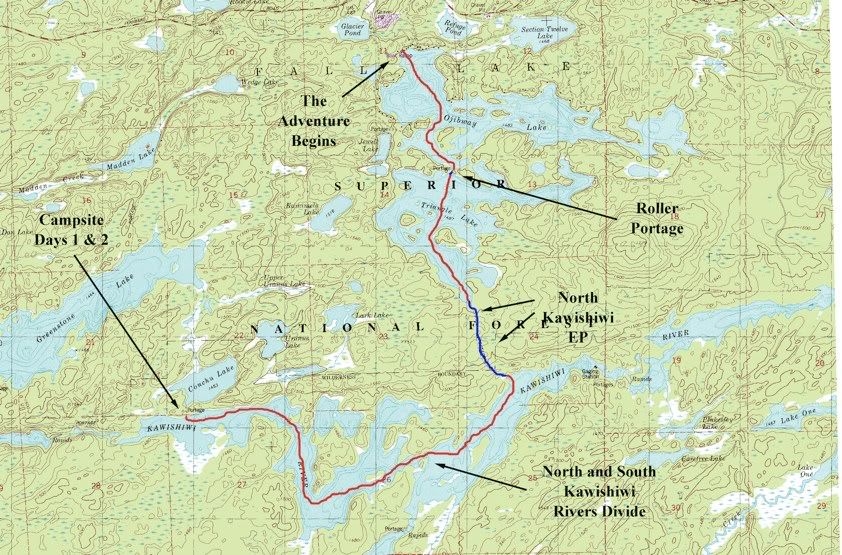
No doubt much of the summer of 2009 will long be remembered as cool and wet. June 30 was no exception. In fact, the high for the day was predicted to be only 53 degrees, which is about 25 degrees below average for the end of June in Ely. We got ready to start paddling in light misty rain at the boat launch on Ojibway Lake: 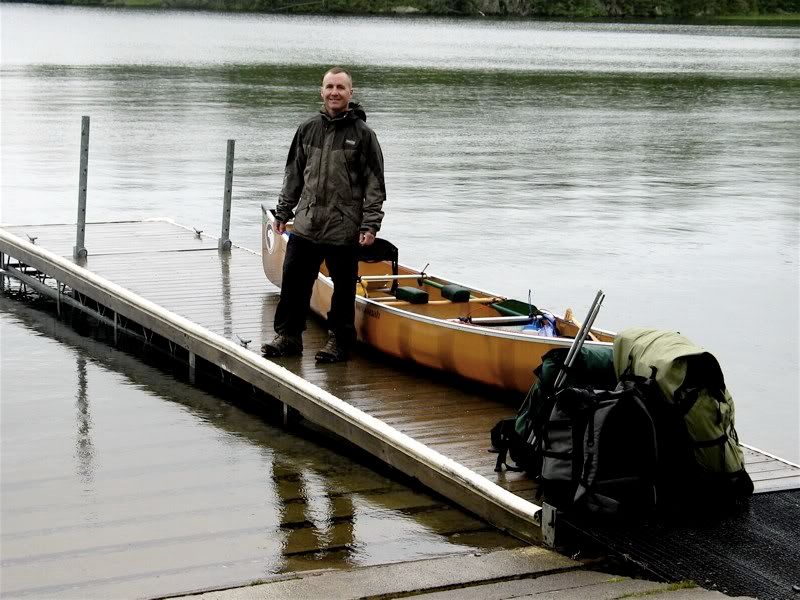
Light rain continued as we paddled across Ojibway. This is one of my favorite non-Wilderness lakes. There are many cabins on it, but most have an old-school rustic feel. On this particular cold wet day, no one else was to be seen. In short order we came to the 10-rod "rolling pin" portage that lets you move your canoe (or small motor boat) fully loaded from Ojibway to Triangle Lake (sorry about the rain- drop smudge on this picture): 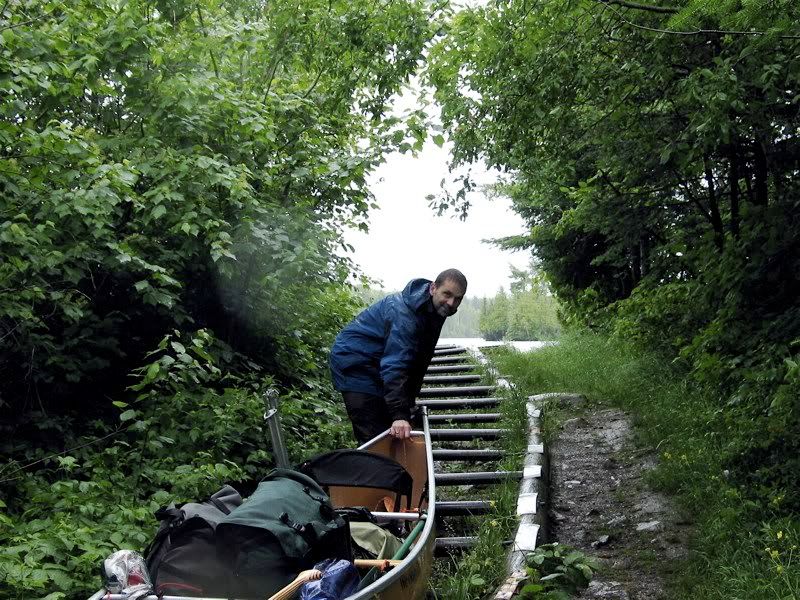
We continued across Triangle Lake to the 190-rod portage that leads into the BWCAW. There is only one entry permit a day for this EP, and most people seem to avoid it because Lake One provides easier access to the same area. Which is fine with me. Less than an hour after we left the boat ramp on Ojibway, we arrived at the 190-rod portage and looked back at Triangle Lake: 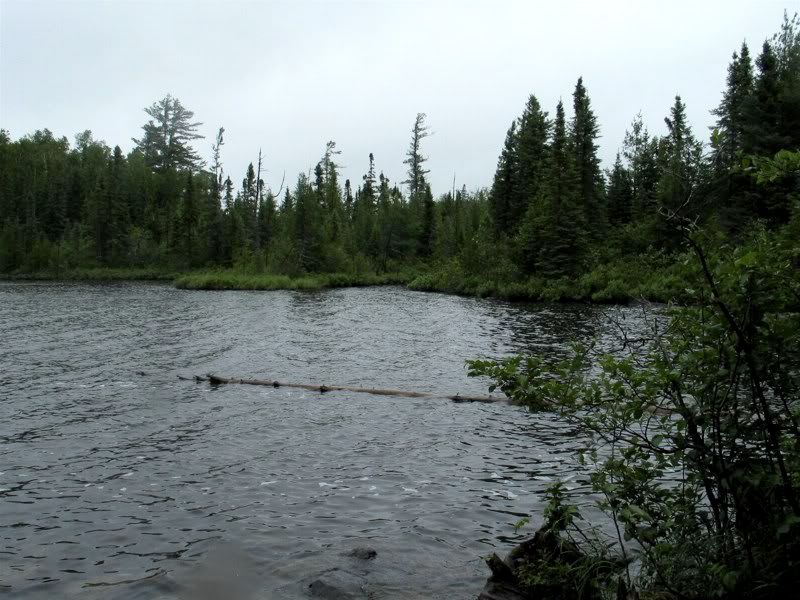
With the wet weather, the bugs were out in force. One good thing about it being so cool and wet was that we were fully suited up in rain gear with minimum flesh exposed to the voracious beasts. A little DEET on the face and hands and we were good to go. The portage was more rugged than your average BW entry portage, but not really too rough at all. (Later in the trip a portage crew told us this portage had recently been improved as a Boy Scout Order of the Arrow project.) After carrying our first load across, we checked out the sights on our way back to Triangle for the second load. The wet weather had spawned a lot of fungi, a sample of which follows: 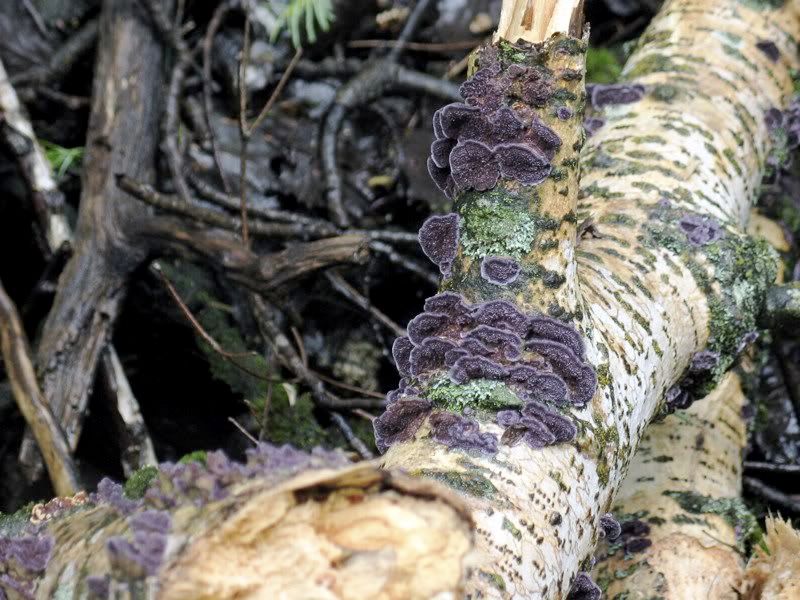
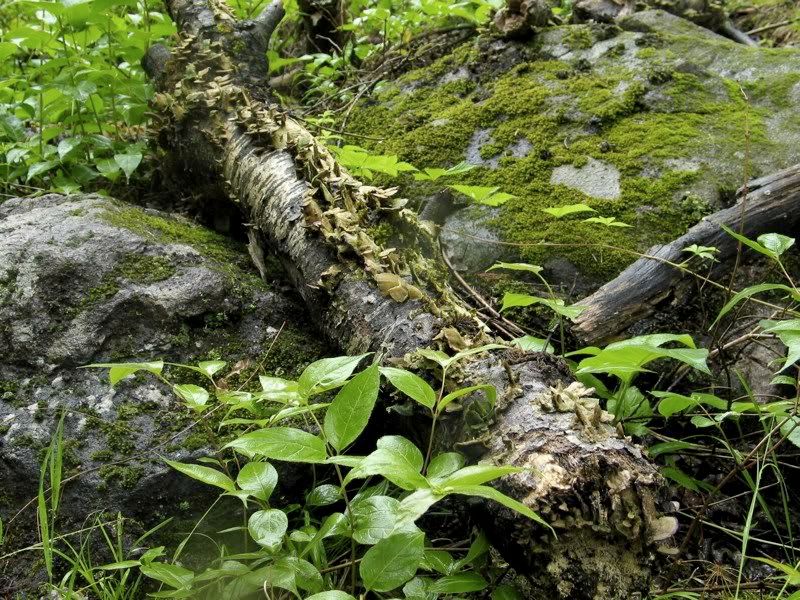
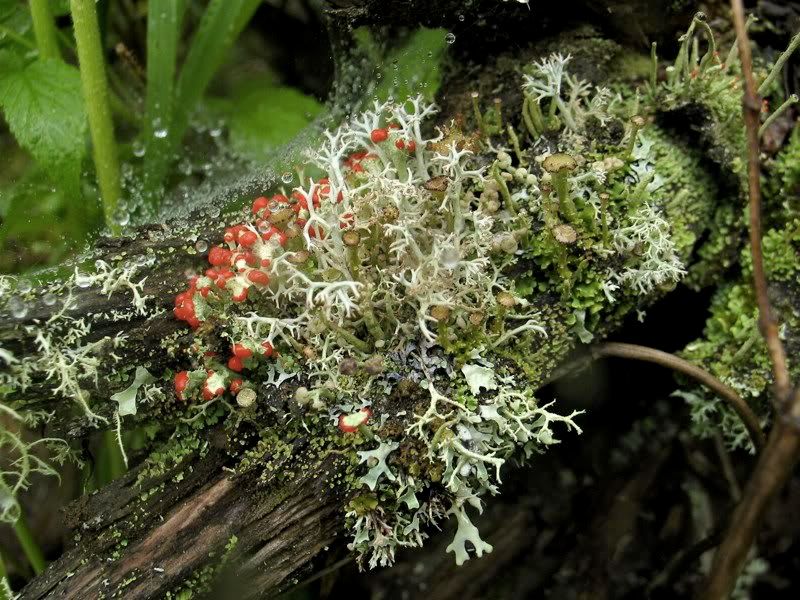
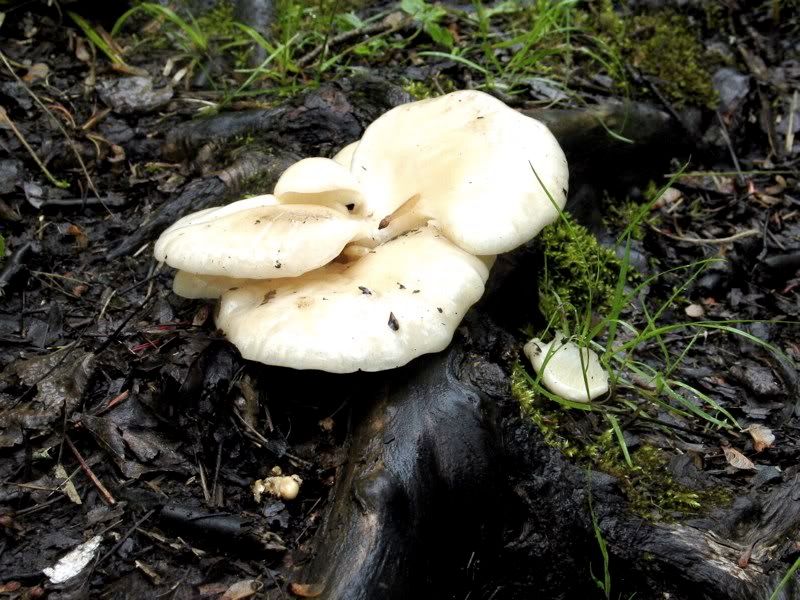
There were also many wildflowers, a few of which follow. The first one is Cow Parsnip. It was at least six feet tall: 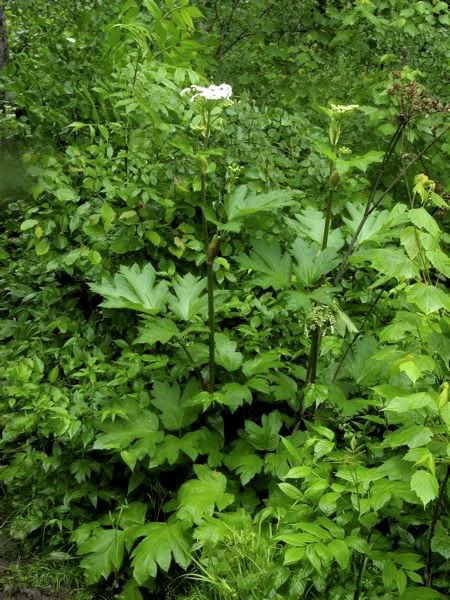
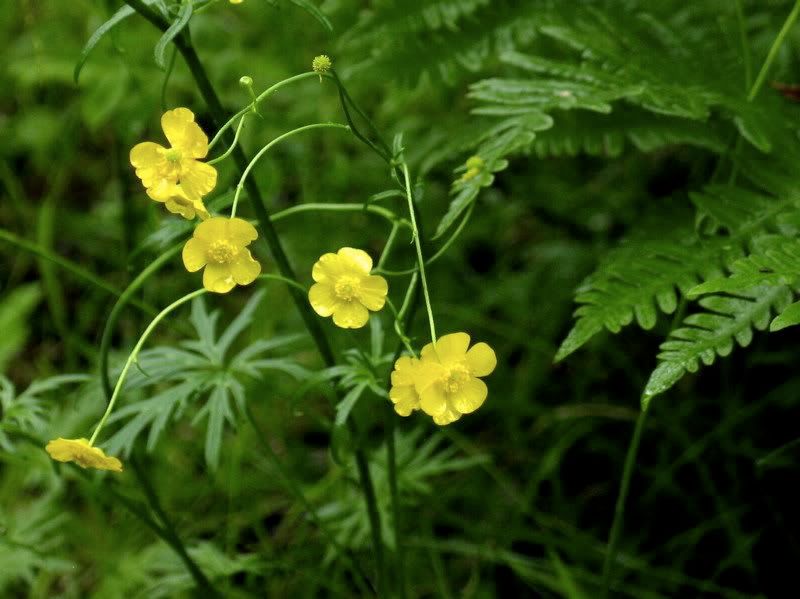
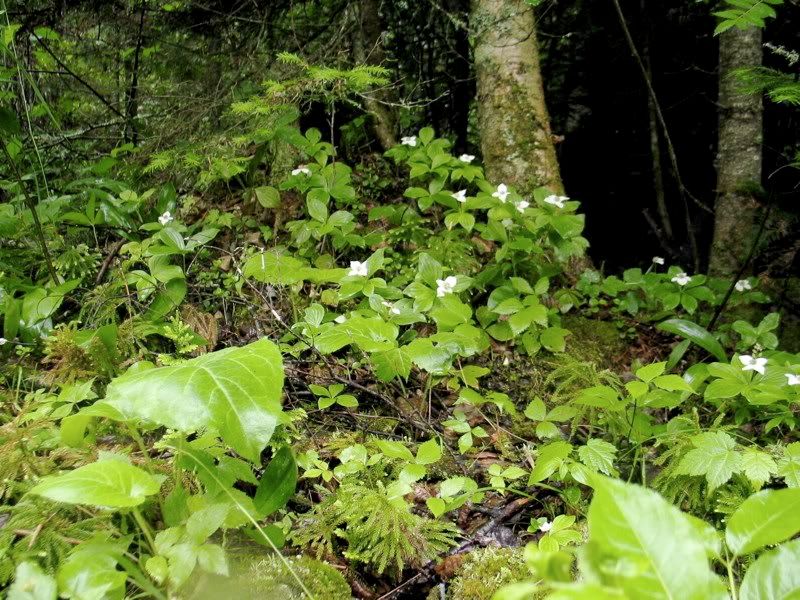
After carrying the rest of our gear across, we loaded up on the Kawishiwi River. This had to be one of the buggiest places on the planet. Once we out on the river, it took a while for all the mosquitoes to dissipate from our canoe.
A stiff wind blew a steady cold mist horizontal as we paddled down the river. That explains why there are no pictures from this part of our adventure. After a mile, we came to the place where the Kawishiwi divides into its north and south branches. It's common for rivers to have branches that join together as they flow downstream. But this spot is different - the river DIVIDES into two branches as it flows downstream. The North and South Kawishiwi then go their separate ways until they meet again west of the Wilderness in Farm and Garden Lakes. The area in between is the "Kawishiwi Triangle."
We decided to follow the North Kawishiwi first, and then cut over to the South Kawishiwi later in the trip to return to our starting point. The North Kawishiwi begins at a narrow notch. Shortly after that we passed a couple of occupied campsites with their occupants hunkered down under rain tarps - the only other people we saw after leaving the Ojibway boat launch this day. We wanted to go just a bit further and were hoping to snag the campsite by the portage to Conchu Lake. I had heard it is a good campsite, and I also wanted to cross over to explore Conchu, which would be easy from that site.
As we continued on, I realized my feet were pretty cold. In the summer we let our feet get wet, and normally it's no problem. But it was cold and windy enough today that wet feet were not very comfortable. I had also just bought new boots to use for this purpose. I got Merrill Mohave boots, which are really desert boots but have the advantage for wet booting that they drain. I fitted them with Super Soles and they were very comfortable. Water drained out well. But they did not dry out quickly, and with the cool and wet air, my feet were not all that happy.
Fortunately, the campsite we were aiming for was open. I think we got there a little bit before 2:00. We were hungry, and there was a break in the rain, so we ate some lunch as soon as we changed into dry shoes. Then we set up camp. Our site had nice views. To the left (west) was a picturesque little island: 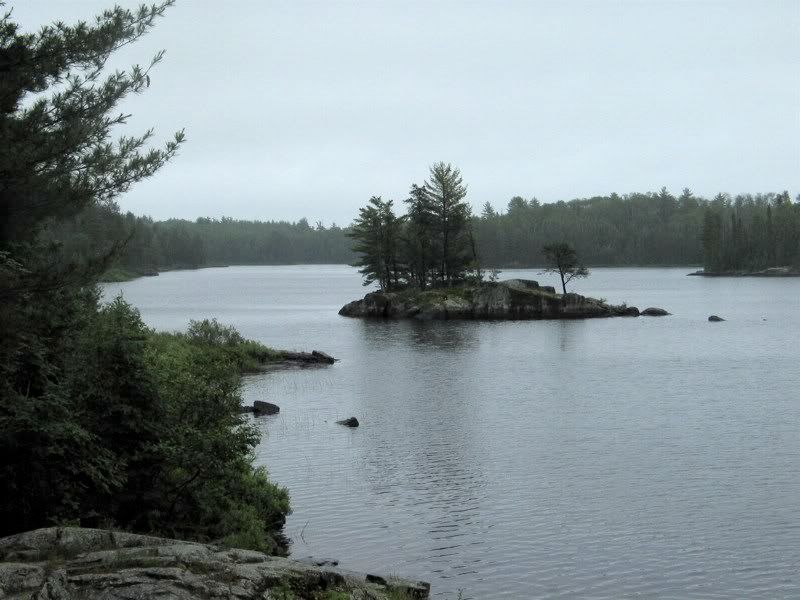
Across the way was a big bog: 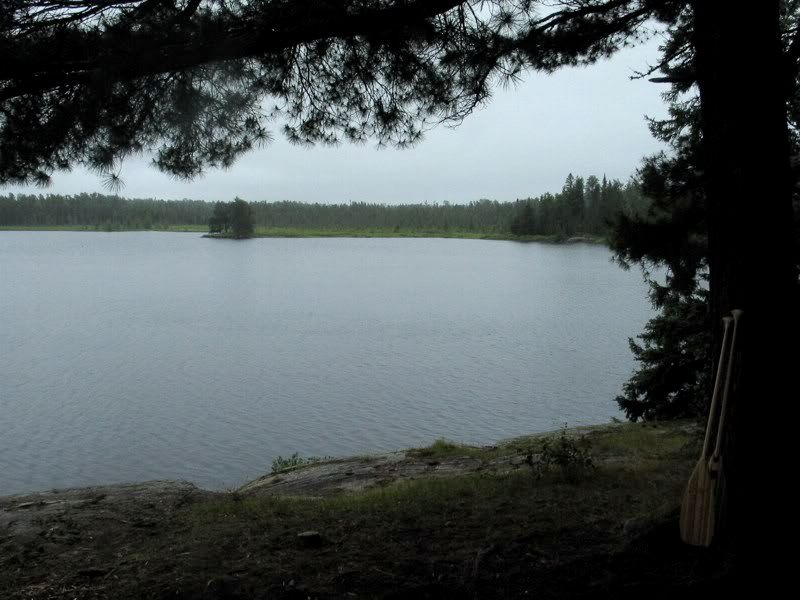
We usually don't bother with bringing steaks or other fresh food for our first night. But because we were going such a short way over a few days on this trip, we decided we would have steaks, baked potatoes, and grilled asparagus to celebrate our entry into the Wilderness today. Of course, that was before we knew that it would be so wet and cold. Now the likelihood that we would get a good cooking fire going for steaks and potatoes seemed dubious. But when we got to the campsite, we found a nice little pile of welcome wood, which by some miracle had stayed dry in the lee of a big White Pine.
While David set up the bear rope, I set out to find more flammable wood. I wandered down the 20-rod portage to Conchu Lake and then followed a trail that I figured led to the lone Conchu campsite. Up on little Conchu it was really blowing and misting, exposed to the north wind. But I found a nice downed birch under some cover that seemed like it might be dry, so I sawed it up into portable pieces and carried it back to camp.
When I got back, it was much warmer and drier (comparatively speaking) than on Conchu. I asked David if it had been raining while I was gone, and he said no. It seemed like the mist was so fine, that it was really wet where you were exposed to the north wind (like on Conchu), but not as much where you were sheltered from the north (like at our campsite).
The stack of birch I brought back was wet on the outside, but since birch bark is waterproof, I figured if I peeled the bark off, the wood would be fairly dry, and I could then rip up the bark to use as a fire starter. This took some time, but it really paid off. With the birch plus the welcome wood, I got a blazing fire going and had lots of wood to get a good bed of hot embers. Here I'm poking at the potatoes in the embers just before putting the steaks on the grill: 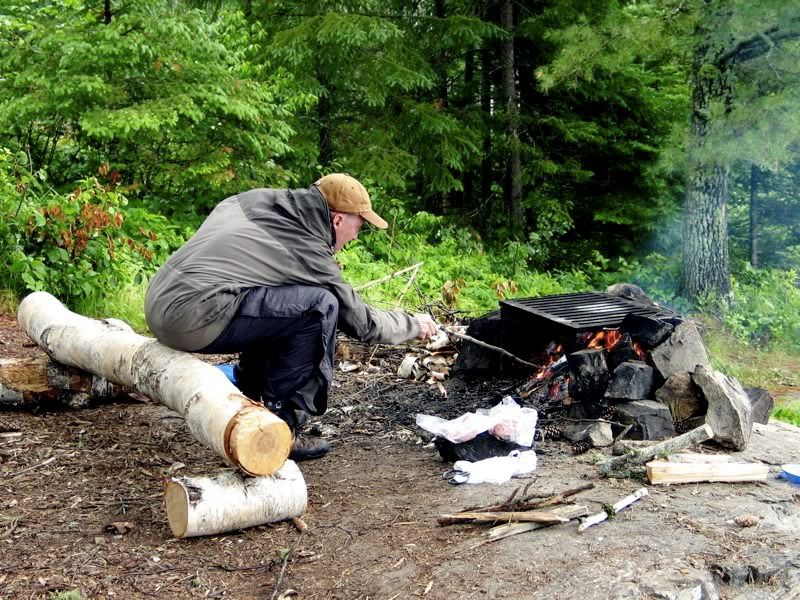
Dinner was a success. And we still had our rain suits on to keep the bugs from feasting on us. We did the dishes, tied down the canoe, and sat back with a generous helping of Maker's Mark while we gazed out at the island to our left: 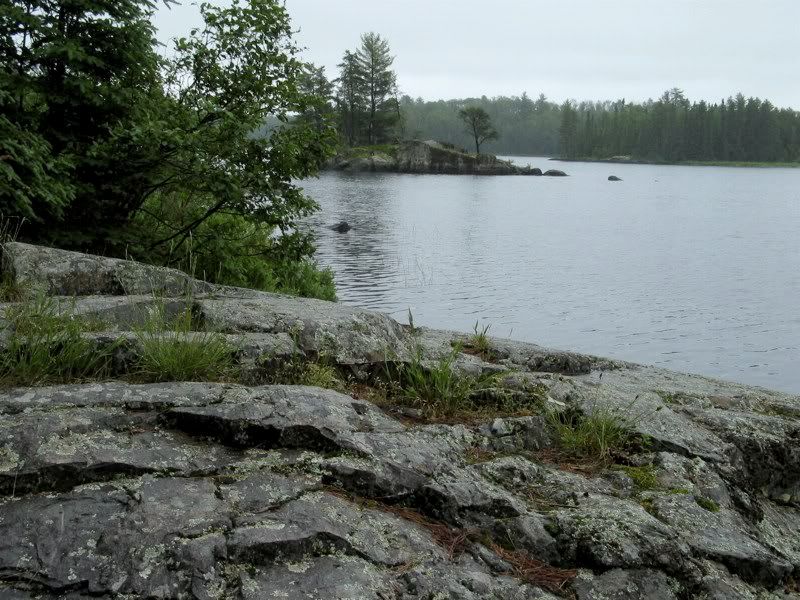
And at the bog across the river: 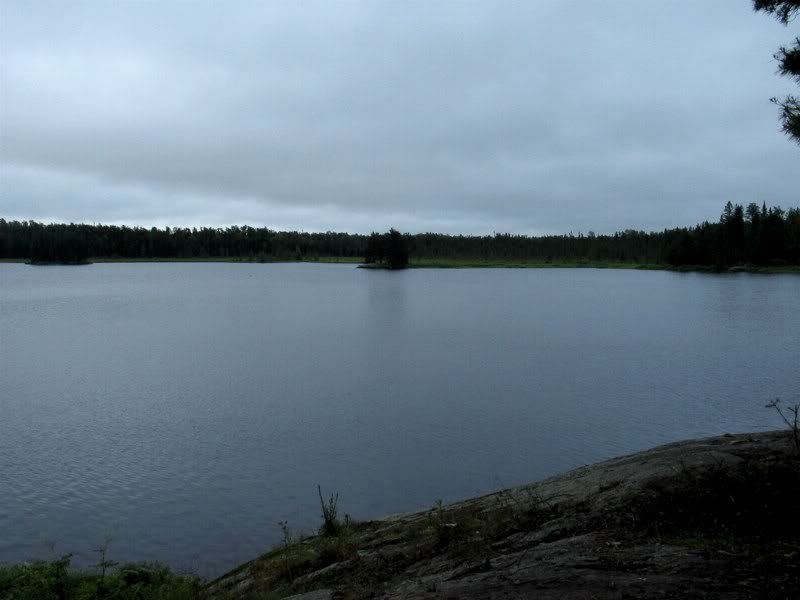
We hit the sack as the mosquitoes called in their reinforcements at dusk. It rained through the night, but at some point I could no longer avoid the need to get up to commune with nature. My camp shoes were outside the tent under the vestibule, and I pulled them on to venture out. After taking my shoes back off when I got back in the tent, I noticed a slick slimy chartreuse smudge on one of my socks. It seems a slug had made itself at home in one of my shoes. Yuck! Well, that will teach the bastards. At least it wasn't an 8-inch long Banana Slug like they have in Oregon. And with that thought, I went back to a fitful sleep as the wind and rain and cold continued through the night.

 Donate - BWCA.com
Donate - BWCA.com